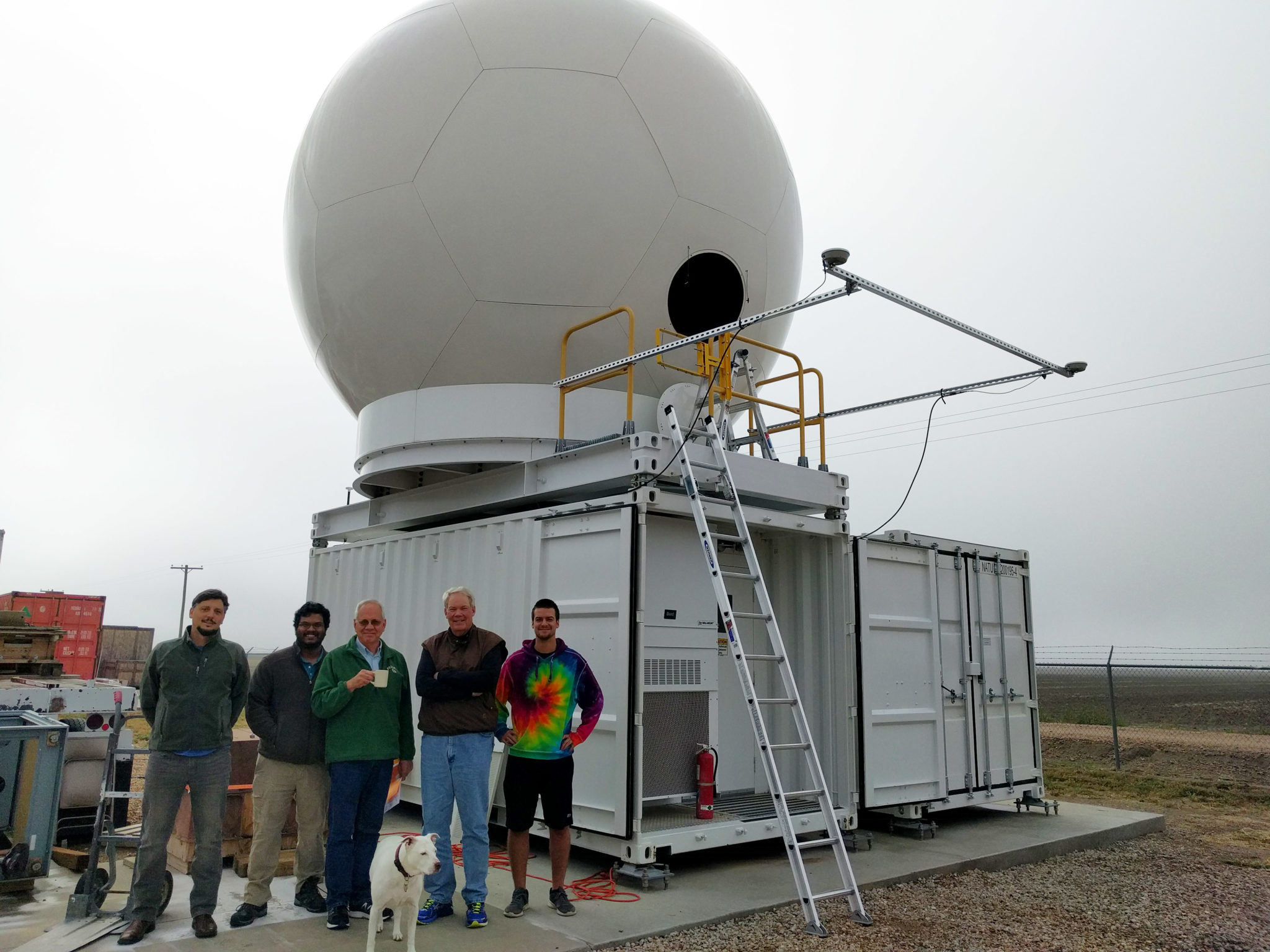
Members of the SEA-POL team with the radar, right before disassembly and shipment to San Diego for its voyage to sea. From left: engineer Francesc Junyent, engineer Jim George, CSU-CHILL facility manager Pat Kennedy, Professor of Atmospheric Science Steve Rutledge, graduate student Alex Morin, and Rutledge’s dog, Saphira.
In mid-October, Steven Rutledge will sail to the intertropical convergence zone near the Equator aboard a 300-foot vessel called the R/V Roger Revelle.
It’s not a vacation cruise. Rutledge, professor of atmospheric science, will lead a Colorado State University team on a five-week research voyage to test a new weather radar. After more than two years of planning and construction at the CSU-CHILL National Radar Facility in Greeley, the team will deploy the most advanced shipborne radar the world has ever seen.
The radar is called SEA-POL (short for “seafaring polarimetric”), and it was built through a $1.3 million grant from the National Science Foundation awarded to Rutledge and V. “Chandra” Chandrasekar, professor in CSU’s Department of Electrical and Computer Engineering. The ship deployment is funded by an additional $300,000 from NASA and the National Science Foundation.
Ocean salinity
The SEA-POL mission is part of a larger NASA experiment to understand the fate of rainwater that falls on the sea surface. Rutledge and four other CSU team members will board the R/V Revelle with about 20 other scientists and technicians from other U.S. institutions studying various aspects of upper-ocean salinity.
When rain hits the salty ocean, it creates a top layer of fresh water, depending on wind and rain conditions. When the sun heats up this layer, it can trigger new atmospheric convection and heavy rainfall. This process of freshwater mixing, and the role it plays with ocean heating and cooling, is not well understood, Rutledge said. “One of our goals is to understand how the evolution and life cycle of tropical convection scales up to climate-type processes,” Rutledge said.
Pioneered at CSU: dual polarization
The SEA-POL radar uses pulsed microwave energy to measure ocean rainfall over an approximately 75-mile radius. Its signature technology is called dual polarization, which transmits both horizontal and vertical electromagnetic waves to collect rainfall estimates and other detailed information about clouds.
“Rainfall typically occurs in connected patches,” Rutledge said. “We will use our radar to find those patches, and drive the ship through them.”
Dual polarization, which can differentiate between ice particles and rain, for example, was jointly pioneered in the 1990s by CSU scientists at CSU-CHILL and researchers at the National Severe Storms Lab in Oklahoma. Today, dual polarization is used in more than 150 ground-based radars operated by the National Weather Service and is instrumental in modern severe-weather forecasting.
The deployment of SEA-POL is the first U.S.-based experiment using dual polarization shipborne radar.
The completed radar was dismantled and shipped from Greeley to San Diego at the end of September to prepare for departure. Rutledge credited the engineering contributions of team members Jim George and Francesc Junyent, under the guidance of Chandrasekar, for getting the radar ready for sea. George and Junyent, postdoctoral researcher Brody Fuchs, and technician Matt Brothers will accompany Rutledge on the deployment.
“It has been very rewarding to build, and now, to go out to sea and collect what we think is going to be unprecedented data,” Rutledge said.